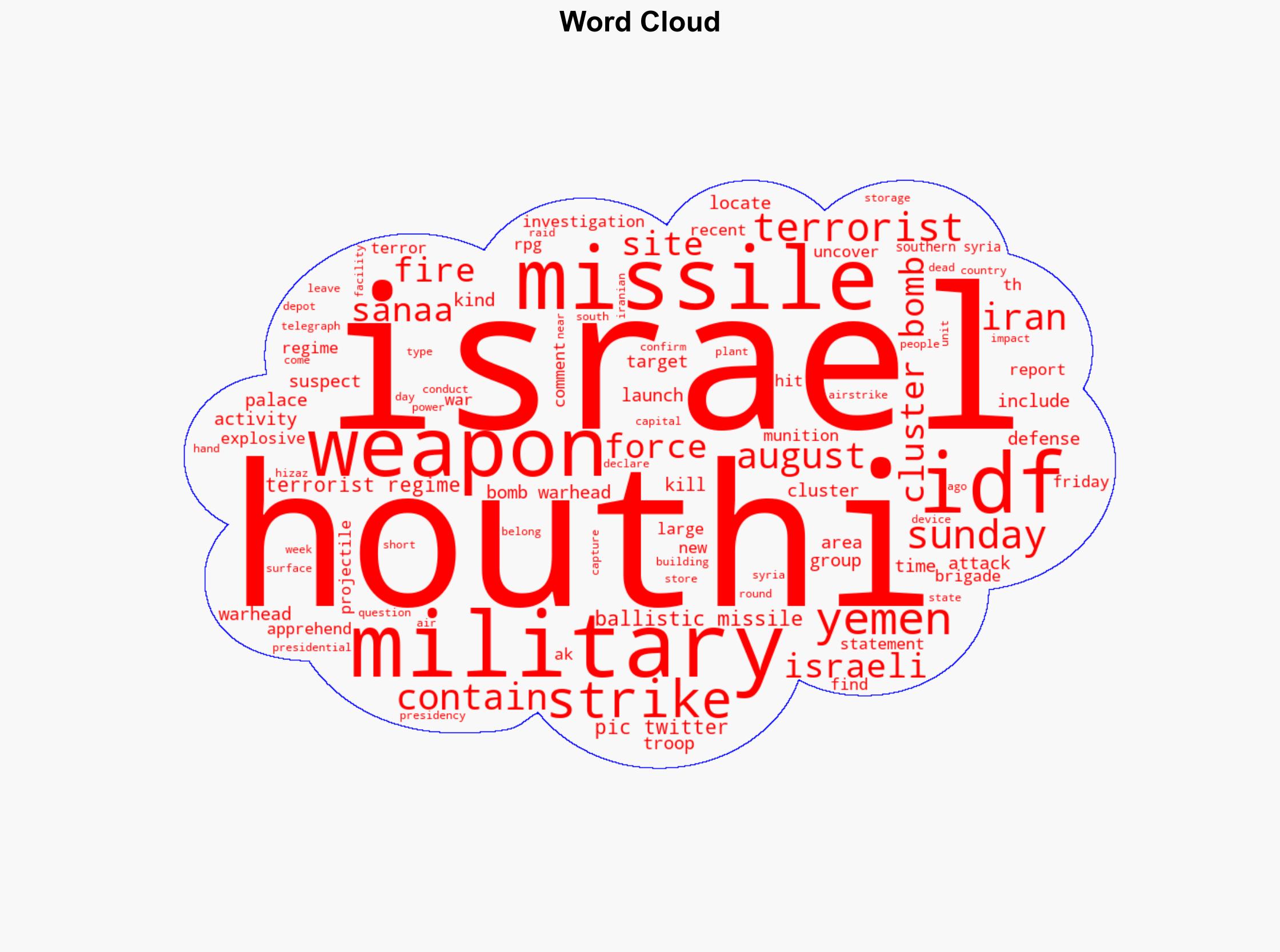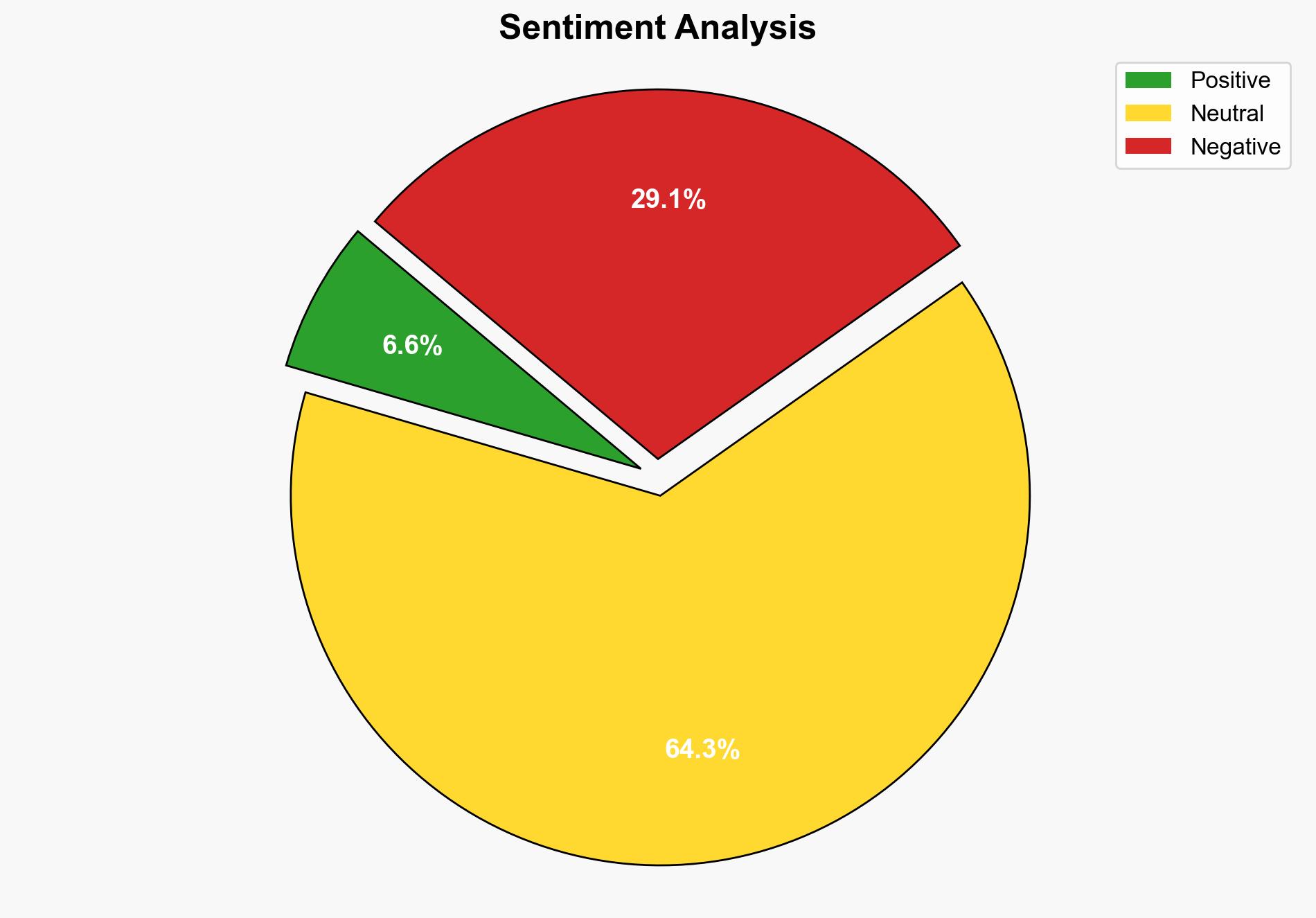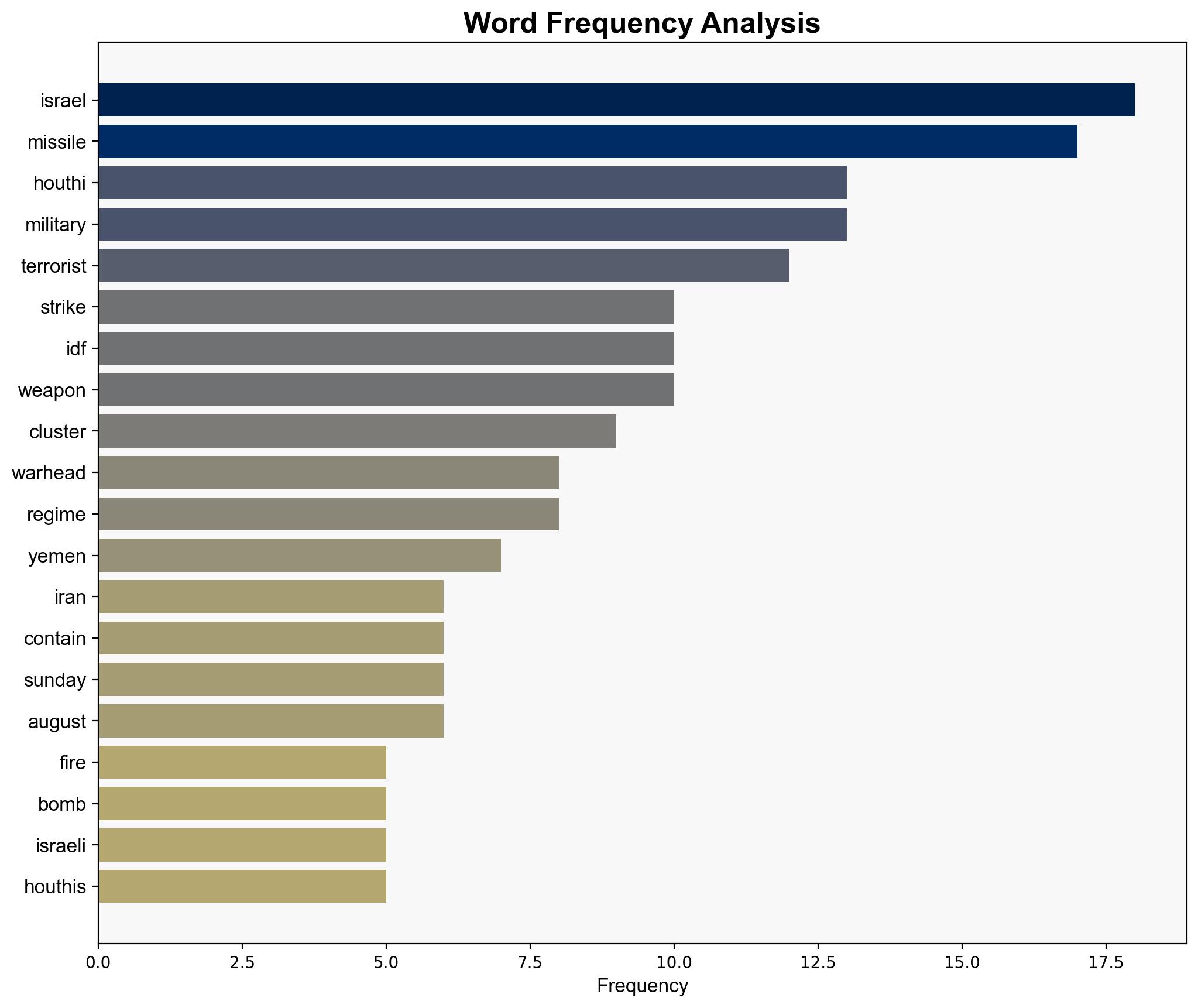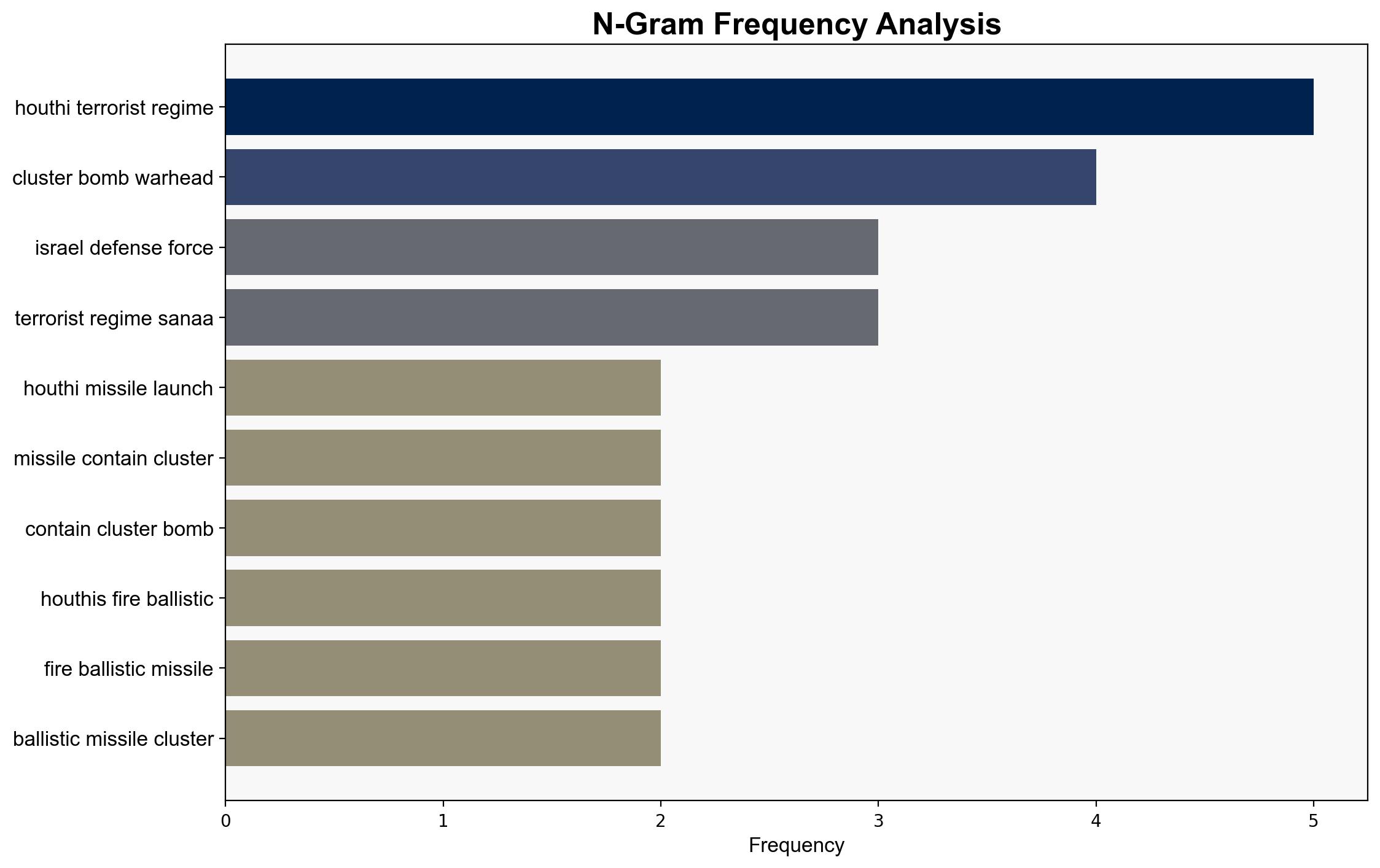Israel Strikes Near Yemen Presidential Palace After Houthi Missile Launch – Legalinsurrection.com
Published on: 2025-08-24
Intelligence Report: Israel Strikes Near Yemen Presidential Palace After Houthi Missile Launch – Legalinsurrection.com
1. BLUF (Bottom Line Up Front)
The most supported hypothesis is that Israel’s airstrike was a direct response to the Houthi missile launch, which posed an immediate threat due to the use of cluster munitions. The confidence level is moderate due to the complexity of regional dynamics and potential Iranian involvement. Recommended action includes increased intelligence sharing with regional allies and bolstering missile defense systems in anticipation of further escalations.
2. Competing Hypotheses
1. **Direct Retaliation Hypothesis**: Israel’s airstrike was a direct and immediate retaliation to the Houthi missile launch containing cluster munitions, aimed at neutralizing further threats and demonstrating military capability.
2. **Strategic Deterrence Hypothesis**: The airstrike was part of a broader strategic deterrence effort by Israel to counter Iranian influence in the region, using the Houthi missile launch as a pretext to target Iranian-backed assets in Yemen.
Using ACH 2.0, the Direct Retaliation Hypothesis is better supported given the timing of the strike and the specific targeting of military infrastructure linked to the missile launch. The Strategic Deterrence Hypothesis is plausible but less directly supported by the immediate evidence.
3. Key Assumptions and Red Flags
– **Assumptions**: It is assumed that the Houthi missile launch was directly linked to Iranian strategic objectives. Another assumption is that Israel’s response was solely a military decision without broader geopolitical considerations.
– **Red Flags**: The lack of detailed intelligence on the exact nature of the missile and its origins raises questions. There is also a potential cognitive bias in viewing all Houthi actions as Iranian-directed.
– **Inconsistencies**: The report does not clarify the extent of Iranian involvement or the specific nature of the cluster munitions used.
4. Implications and Strategic Risks
– **Escalation Risks**: The airstrike could lead to further retaliatory actions by the Houthis or Iranian proxies, increasing regional instability.
– **Geopolitical Tensions**: This incident may exacerbate tensions between Israel and Iran, potentially drawing in other regional actors.
– **Economic Impact**: Disruptions in Yemen could affect global oil markets, given the proximity to key shipping lanes.
– **Cyber Threats**: Increased likelihood of cyber-attacks as a form of asymmetric retaliation.
5. Recommendations and Outlook
- Enhance regional intelligence cooperation to monitor missile threats and Iranian activities.
- Strengthen missile defense systems to protect against future attacks.
- Engage in diplomatic efforts to de-escalate tensions with Iran and its proxies.
- Scenario Projections:
- Best Case: De-escalation through diplomatic channels, leading to reduced hostilities.
- Worst Case: Escalation into broader regional conflict involving multiple state and non-state actors.
- Most Likely: Continued tit-for-tat exchanges with periodic escalations.
6. Key Individuals and Entities
– Benjamin Netanyahu
– Israel Katz
– Eyal Zamir
– Houthi leadership
– Iranian military advisors
7. Thematic Tags
national security threats, cybersecurity, counter-terrorism, regional focus




